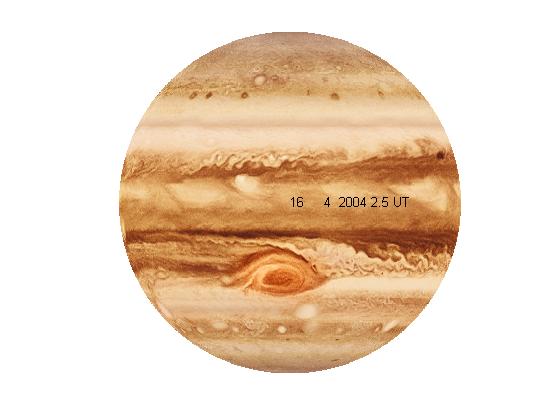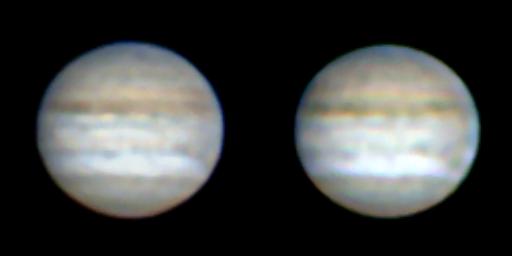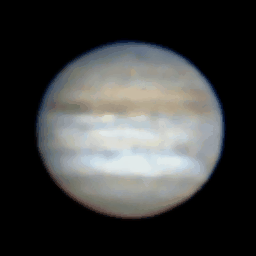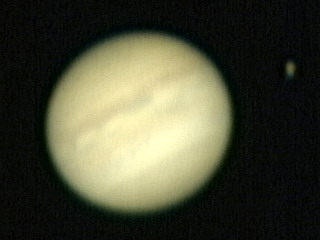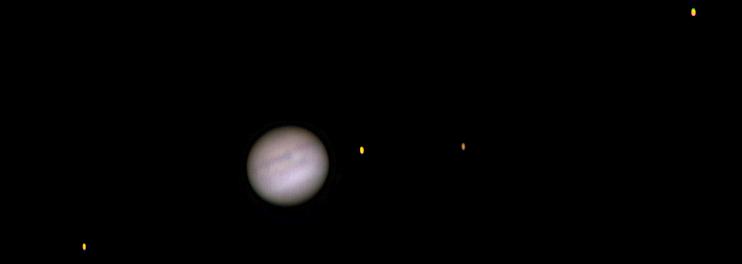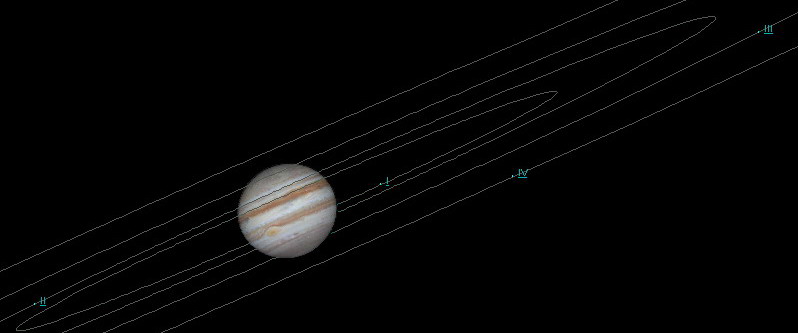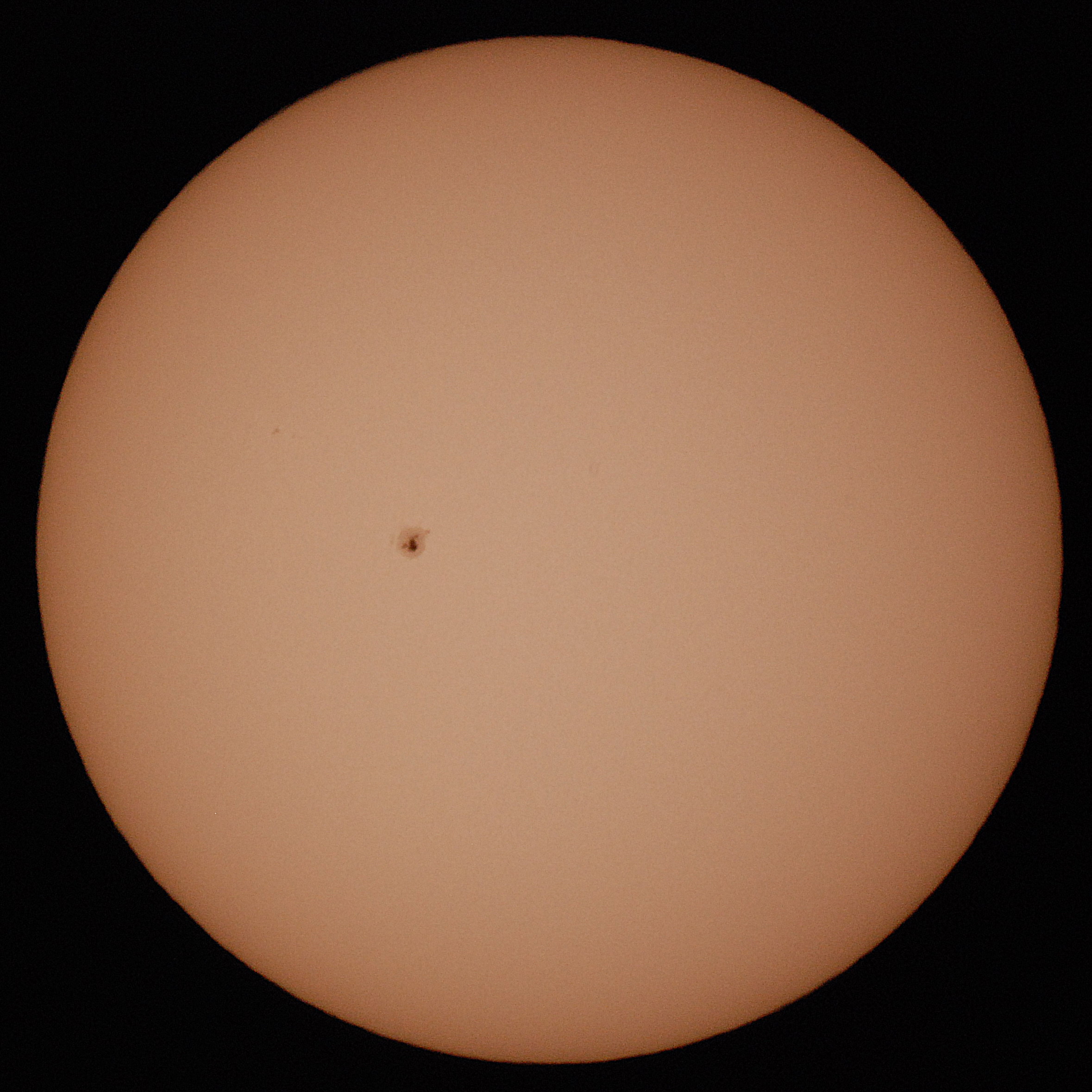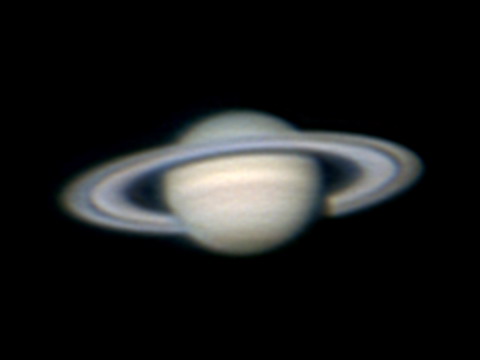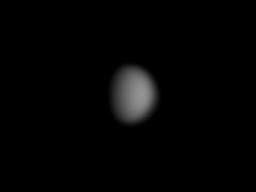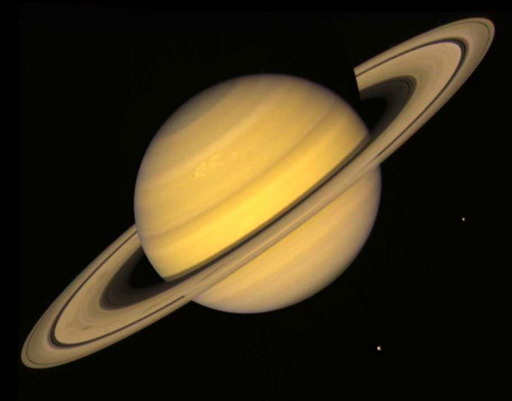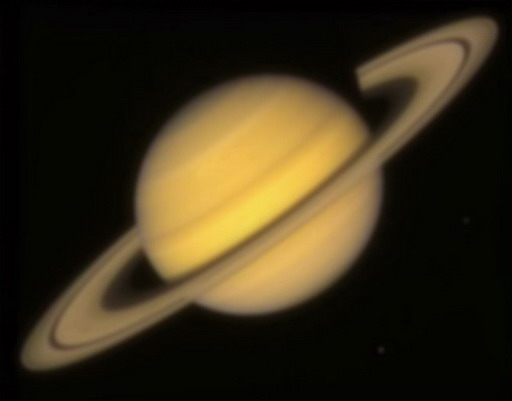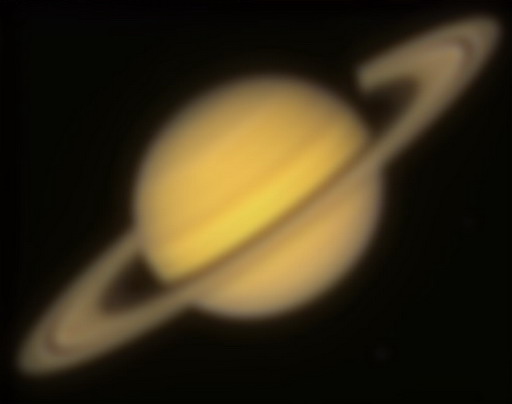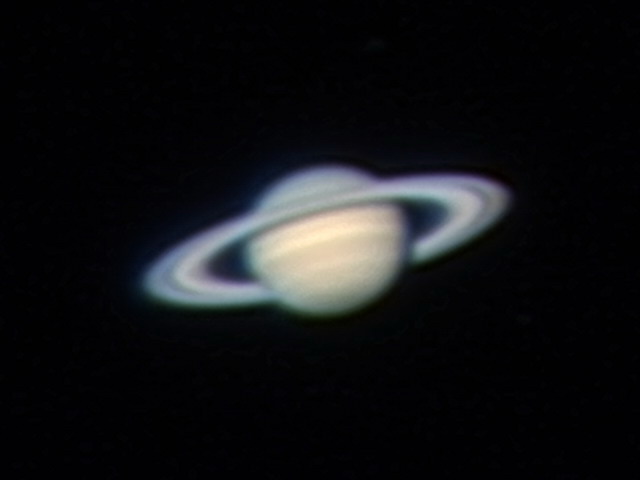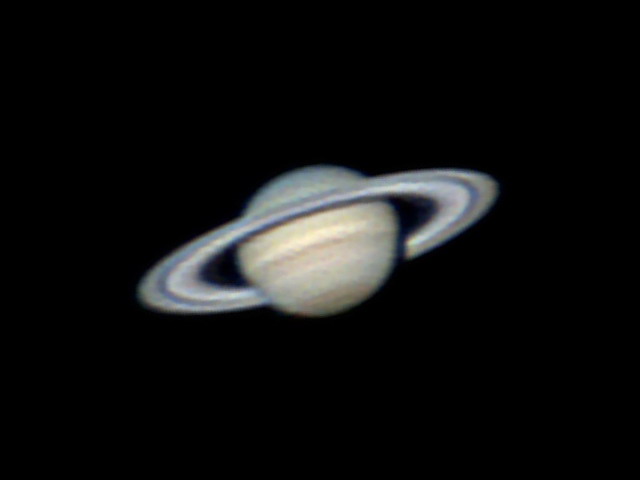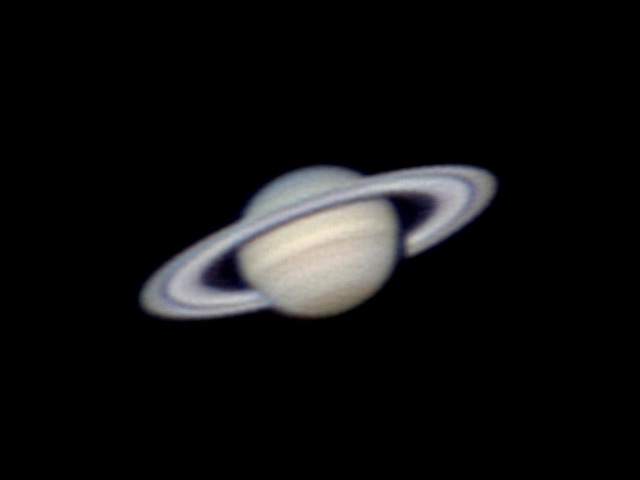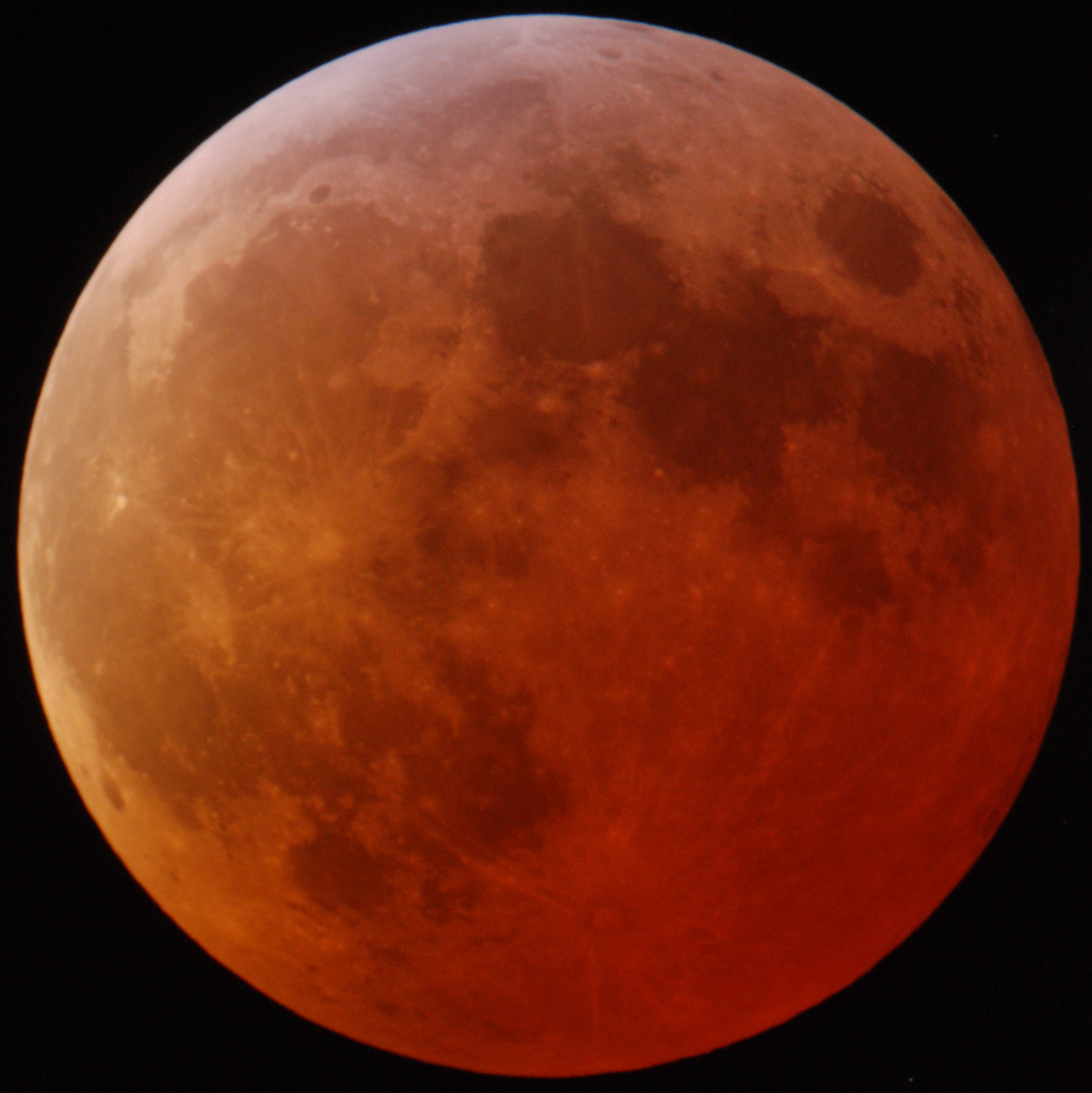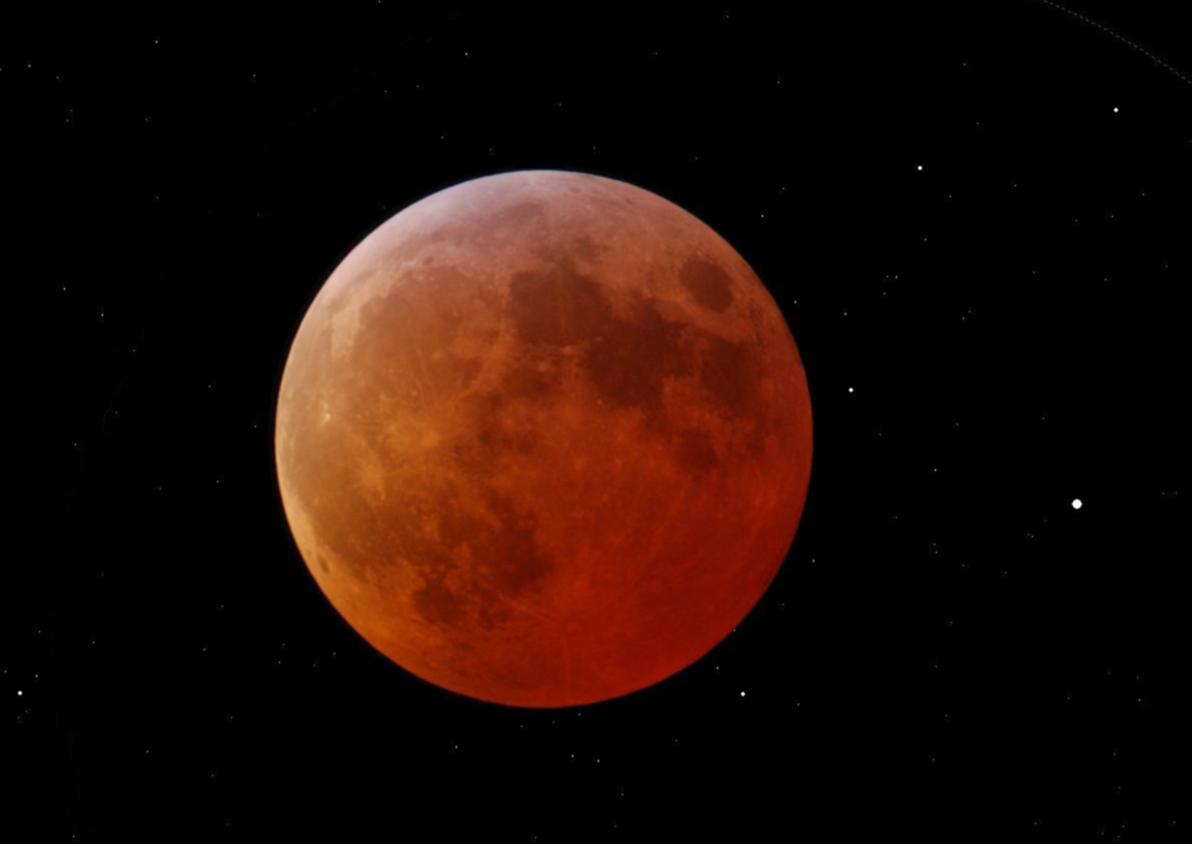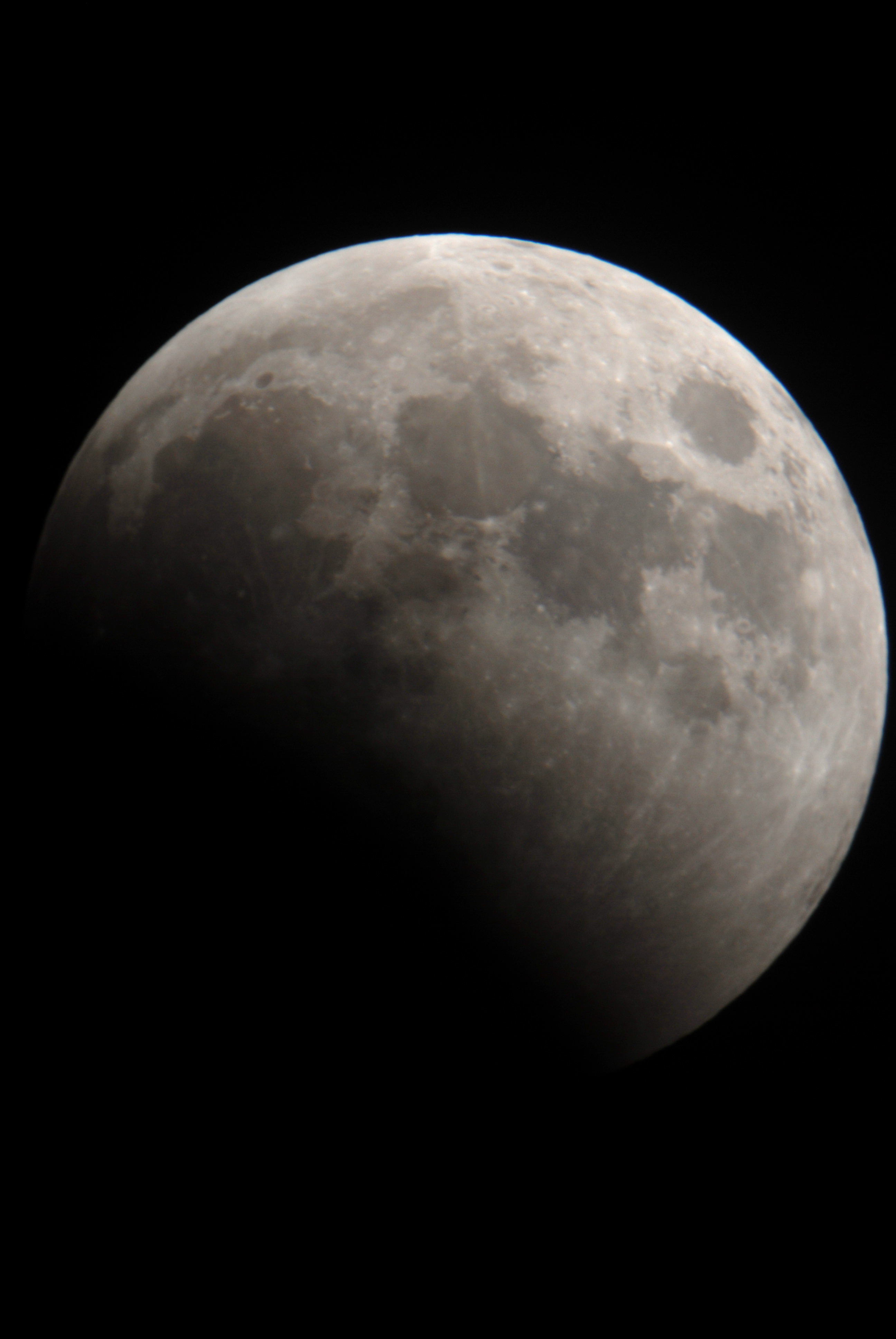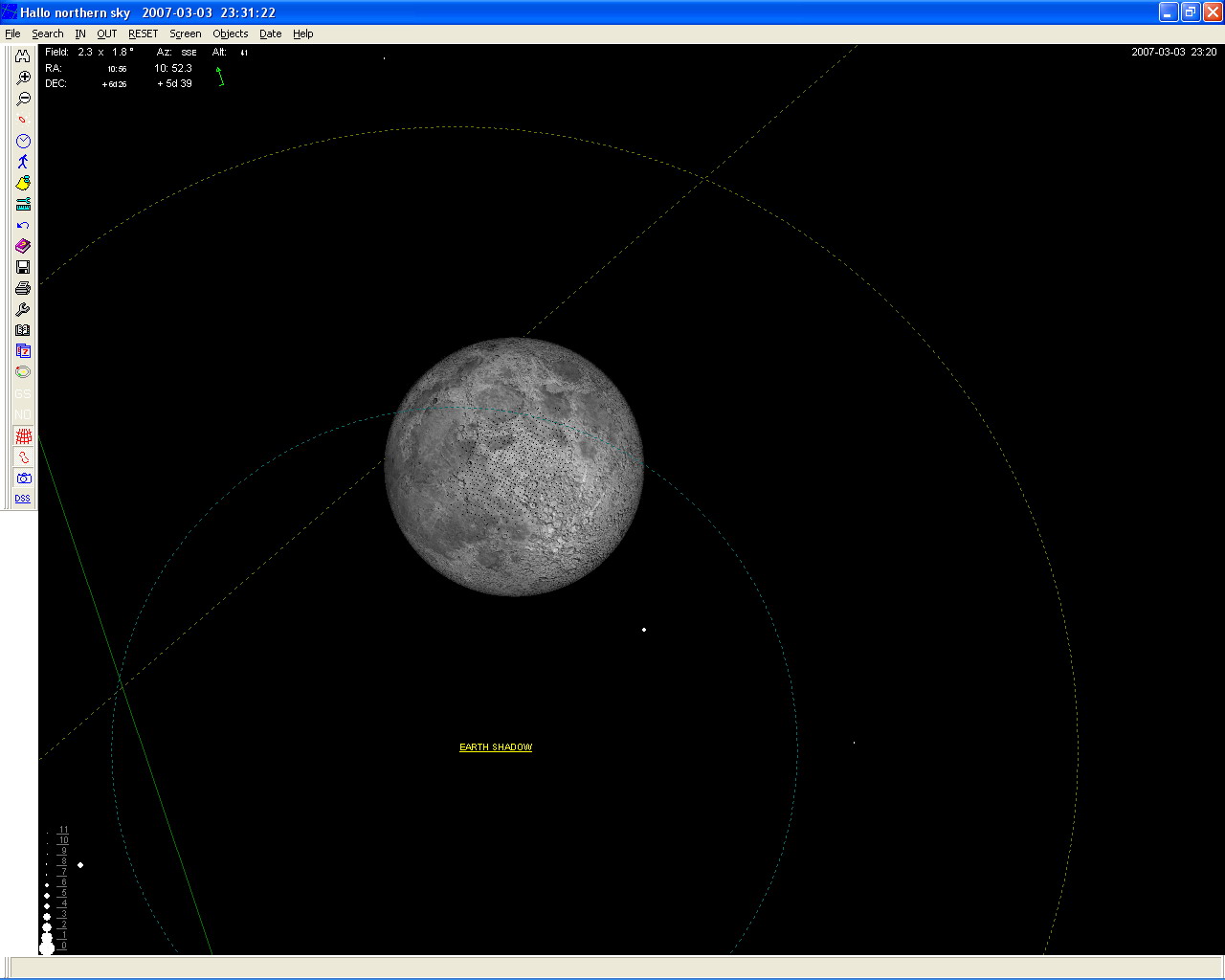Since the opportunities to see the GRS in The Netherlands are rare, I wanted to make sure the transit predictions are correct. Also I wanted to have a tool that gives the right transittimes for older dates (for transit example see first image below) . I could not find something that could reliably do both. Even the old Hallo Northern Sky gave confusing results.
This file contains the final result of this quest: an entry for each day indicating the times at which the GRS transits the central meridian of Jupiter from 1-1-1963 to 31-12-2007.
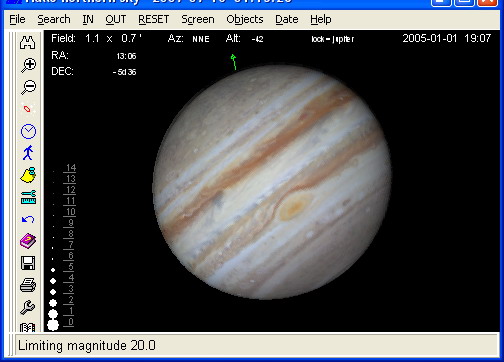
The times have been calculated using the formulae of Jean Meeus (Astronomical Algorithms, ISBN 0943396611).
The basic idea behind the calculations, is that Jupiter rotates about 870 degrees per day. The GRS however drifts slowly on the “surface” of Jupiter. Therefore you also need to know the longitude of GRS on Jupiter over the years. The following figure shows the whereabouts of GRS during the last 45 years (numbers put in Matlab from www.jupos.org):

So, combining teh knowledge of the rotational phase of Jupiter at the start of the day, rotational speed and the longitude of GRS, the transits times for that day can be calculated. For example: a phot of April 16, 2004, 2:30 UT.
This date, Jupiter starts at about zero degrees (pure coincidence) and the GRS longitude is 90 degrees. It takes Jupiter 90/870=0.1 days=2.5 hours to rotate to 90 degrees. Therefore the first transit can be expected at 2h30. It takes Jupiter about 10 hours to make another rotation. So the other transits can roughly be expected at 12h30 and 22h30.
The following shows this idea graphically (exact transits are 02:35 12:30 22:26).
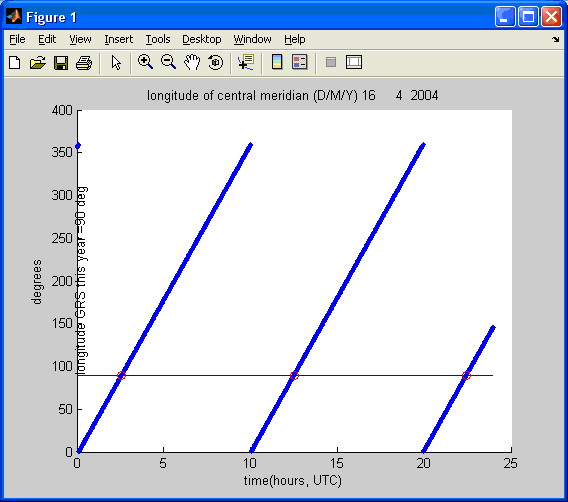
A photo taken that day:
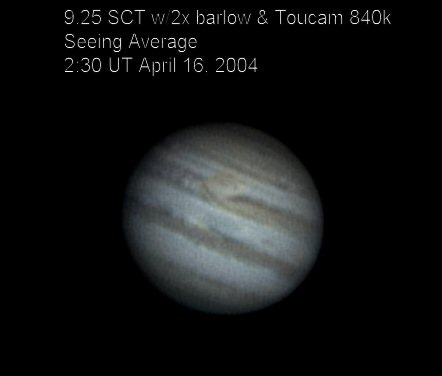
And now we have all the info we need, we can also use Matlab to generate a simulation of the position of GRS:
